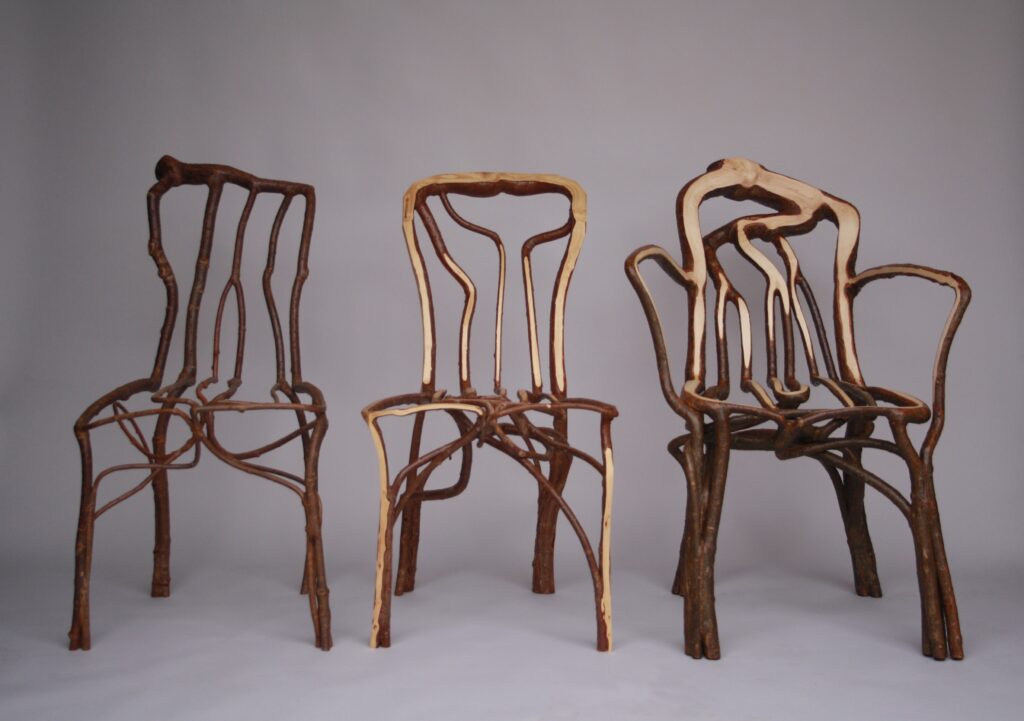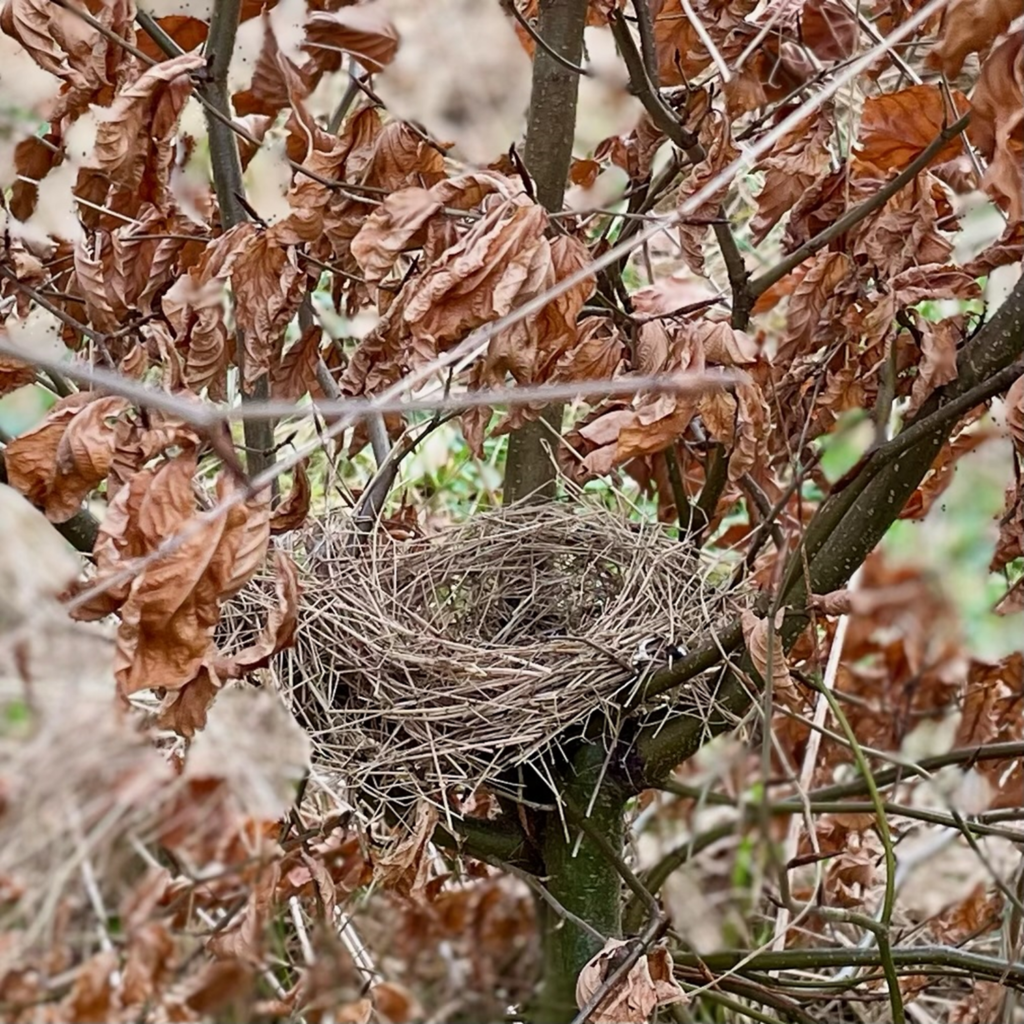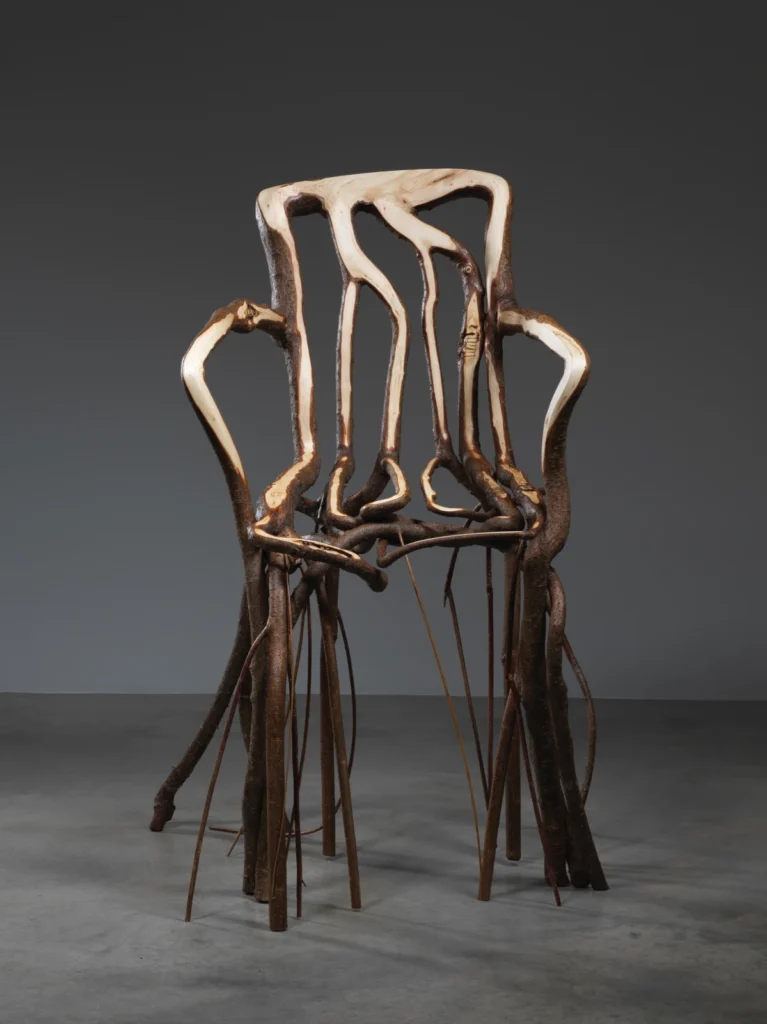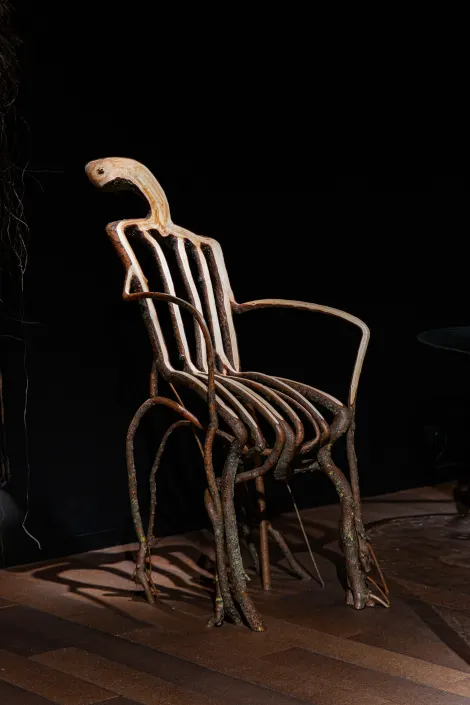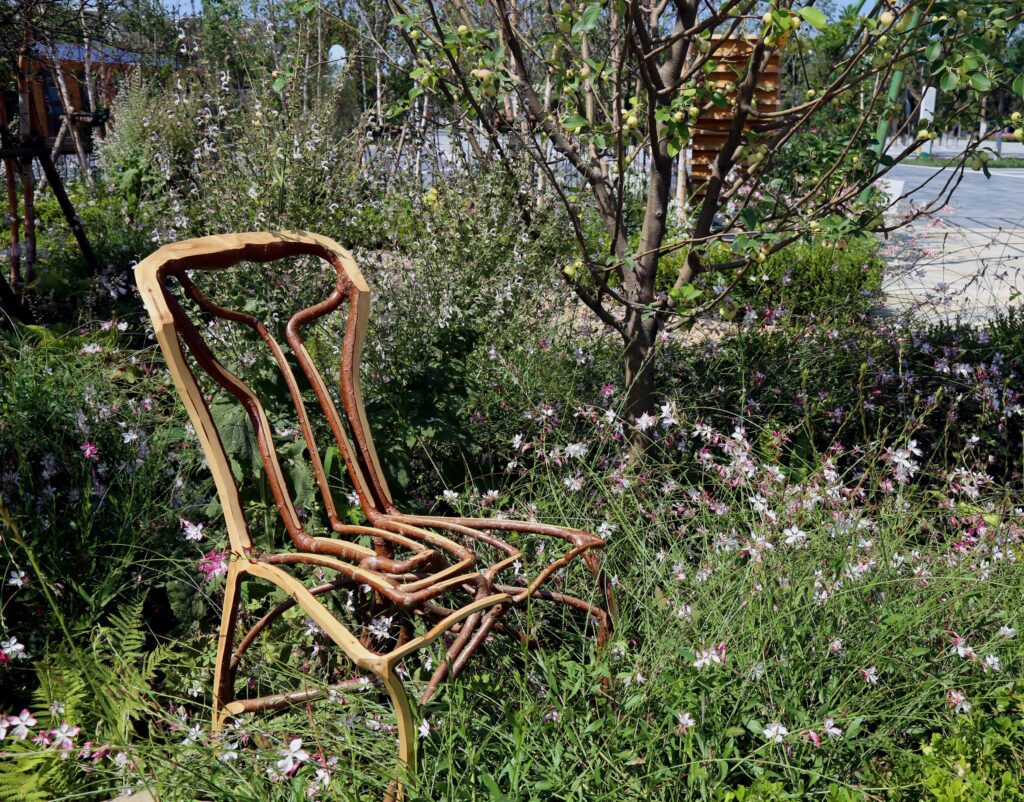
In opening the new series ‘Furniture Design: Then and Now,’ I have hosted Alice and Gavin Munro, founders of award-winning UK-based Full Grown in speaking about empowering nature for the sake of sustainable furniture. I have met them in my recent trip to Derbyshire, where they grow chairs in an orchard. They call their venture ‘Full Grown’ in celebration of the idea that furniture should be grown in solid pieces rather than composed of bits of wood in the traditional way.
Think about living in a city surrounded by green parks, and when seeking to furnish your home, you are not going to a shop, but rather walk into the park and harvest a chair, a table, or a lamp. Directly from the tree. Sounds like a dream? If you look at what seems at first a naïve painting by Gavin Munro, it depicts this imaginary community, where furniture is grown on trees. According to his holistic utopian vision, in the next century the gardens of our cities and communities will be filled with trees grown in the forms of chairs, tables, and benches, enabling the members of those communities to be able to harvest furniture for their homes.
Munro and his life partner Alice Munro are busy working hard to create a prototype for this radical ideal at their orchard in the English countryside. They investigate and study while growing furniture on apple, ash, hazel, and willow trees in search of the ultimate formula that will change the world of furniture making. Their project has generated tremendous interest in the design community. Recently they received the 2024 Créateurs Design Awards, and their chairs have been included in the A-list of contemporary design collections, desired by curators and collected in museums. This furniture is as contemporary as it gets and notions of inventing humane methods for creating design, while collaborating with nature without draining resources, places Full Grown at the forefront of thinking furniture today.
Munro started his experimentation in 2006, which turned out to be just the right moment. These were the early years of the new millennium, and practitioners of design were seeking out fresh, scientific, and unexpected ways of allowing objects to grow. Their innovations were celebrated and illuminated in Paola Antonelli’s seminal exhibition of 2008, Design and the Elastic Mind, where MoMA’s Senior Curator of Architecture and Design revealed new and progressive forms of production, utilizing scientific advances as well as both low and high tech. She presented computerized paint spray, the way robots mimic human creations, objects by colony of bees , and early experimentations with new generations of 3D printers. Munro’s project was not included at that exhibition, as it is still slow to develop. It takes approximately 8 years for every piece of furniture to be formed before it is ready to be harvested. But now, nearly 20 years later with hundreds of furniture pieces grown in the orchard, there is a lot of data collected and new knowledge gained. Yet, out of dozens of trees, only a handful are grown into successful products.
“Each tree,” he told me, is like a person who “deserved kindness and competency.” Those values have become fundamental in his life experience as someone born with Klippel-Feil—a spine syndrome—and spent the first 14 years of his life in hospitals, undergoing many operations. After graduating from art at Leeds University and spending a couple of years as a barn builder in California, it was clear to him that working with nature is what he wanted. Giving trees the same kindness and competency that he received as a patient was his new mission. In Full Grown’s orchard, chairs live in peace with butterflies and birds. Like a paradise.
He has remained committed to growing his furniture in a sustainable way with respect to the environment; once a piece is harvested, the tree is not killed, but rather it regenerates and continues producing furniture while continuing to sustain birds and wildlife. The role of the designer is to bring his own intervention into the natural growth of the tree, like the horticultural technique of grafting, which is meant to produce the best the species has to offer rather than allow the tree to grow in a generic, lesser quality.
Visiting Alice and Gavin Munro’s orchard was an exquisite experience, especially for me as I grew up on a fruit farm. Everything is organized and the trees are arranged in meticulous rows. When you come close to the trees, you can identify the forms of chairs, benches, lamps, all formed of the trees themselves. Once a piece of furniture is ready to be harvested, it is taken to the workshop where it is shaped, trimmed, and made ready to send to the London gallery Sarah Myerscough. The daily work is a reminder of the techniques that were used to correct Munro’s spine that he uses to grow these chairs that star in art fairs across the globe—sought by those who want to live with good design. Poetic, progressive, and so original. Full Grown have been acquired by San Francisco Museum of Modern Art, National Museum of Scotland in Edinburgh, Rotterdam Museum Boijmans van Beuningen, and Manchester Metropolitan University; participated in exhibitions across the globe.
\Alice and Gavin Munro spoke in the series Furniture Desing: Then and Now, which is supported by Design Miami.

